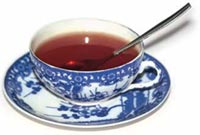


Speech Patterns: 1. Imperative sentences: 1. 你好!车老师。请进。请坐。请喝茶。 2. 请看地图。这是北京。那是上海。 3. 请吸烟。不客气,我不吸烟。 4. 我们都学中文。我们说中文吧。 5. 你喝什么?我喝咖啡。请吧,这是很好的咖啡。 1. Nĭ hăo! Chē lăoshī. Qĭng jìn. Qĭng zuò. Qĭng hē chá. 2. Qĭng kàn dìtú. Zhè shì Bĕijīng. Nà shì Shànghăi. 3. Qĭng xī yān. Bú kèqì. Wŏ bù xī yān. 4. Wŏmen dōu xué Zhōngwén. Wŏmen shuō Zhōngwén ba. 5. Nĭ hē shénme? Wŏ hē kāfēi. Qĭng ba. Zhè shì hĕn hăo de kāfēi. 1. Hello, Teacher Che. Come in, please. Six down, please, and have some tea, please. 2. Please look at the map. This is Beijing. That is Shanghai. 3. Have a cigarette, please. No, thanks. I don’t smoke. 4. We all study Chinese. Let’s speak Chinese. 5. What will you drink? I’ll have coffee. Help yourself. This is very good coffee. 2 . Unmarked co-ordination: 1. 你爱看什么书?中文书,英文书,我都爱看。 2. 爸爸,妈妈,你都爱吗?都爱。 3. 你说她是法国人。她说法文吧?法文,德文,英文,她都说。 4. 大夫说咖啡,茶,他都喝。 5. 看电视,看汉语书,谁不爱 ? 1. Nĭ ài kàn shénme shū? Zhōngwén shū, Yīngwén shū, wŏ dōu ài kàn. 2. Bàba, māma, nĭ dōu ài ma? Dōu ài. 3. Nĭ shuō tā shì Făguó rén. Tā shuō Făwén ba? Făwén, Déwén, Yīngwén, tā dōu shuō. 4. Dàifu shuō kāfēi, chá, tā dōu hē. 5. Kàn diànshì, Kàn Hànyŭ shū, shéi/shuí bú ài? 1. What books do you like to read? I like to read both Chinese and English books. 2. Do you love both your parents? Yes. 3. You say she is French. She speaks French, I guess. She speaks French, German and English. 4. The doctor says he drinks both tea and coffee. 5. Who won’t like watching TV and reading Chinese books?